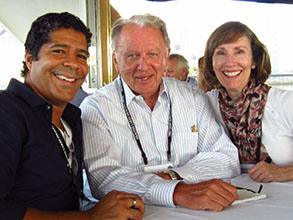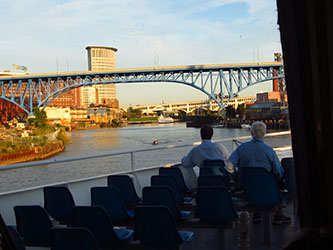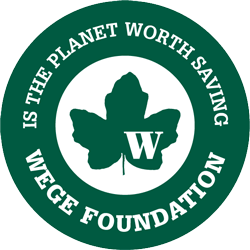If anyone else had announced one cold day in early 2004, “We have to save the Great Lakes,” The Wege Foundation staff would have gently nodded and gone about their business. But not when that “anyone” was Peter Wege. They knew him too well. Ellen Satterlee, now CEO of the Foundation, understood her boss was a man of huge vision devoted to the planet’s health. Terri McCarthy, now V.P. of Programming, knew Peter Wege never saw a challenge too big to take on if it meant leaving the Earth a better place for future generations.
That May of 2004, The Wege Foundation convened the first Healing Our Water conference by assembling over 70 leading environmental experts in Grand Rapids, Michigan. As Wege wrote in his invitational letter, “Our objective is to collaboratively reach consensus on a policy statement for restoring the Great Lakes ecosystem. We will focus not on the problems, but the solutions.”
In September 2012, some 600 state, federal, tribal, local, and community leaders and activists met in Cleveland, Ohio, for the 8th Annual Healing Our Waters conference. Peter Wege’s dream in 2004 has become reality. His focus on “solutions” has turned into $1 billion dollars spent since 2009 on specific environmental projects to “Heal” the Great Lakes.
That billion dollars is a direct result of Peter Wege’s directive to his guests at the original HOW gathering that they “reach consensus on a policy statement for restoring the Great Lakes ecosystem.” His guests did what they were charged to do. And their final collaborative statement ultimately became a $20 billion package of laws in the Great Lakes Collaboration Implementation, now the Great Lakes Restoration Initiative.
The up-and-running GLRI projects completed and in progress are geared at the very problems Wege’s HOW 2004 conference defined. Stop the introduction of invasive species. Prevent sewage contamination and toxic pollution. Restore wildlife habitat.
It is true that the 100-plus organizations representing millions of people who are part of HOW refer to this successful federal legislation as the Great Lakes Restoration Initiative. But it started out with a different name. In his 2004 charge that his invited guests come up with a collaborative policy statement, Peter Wege told them, “I’m calling it the Magna Carta of the environmental movement for the Great Lakes.”
“GLRI” works fine. But “Magna Carta” does have a nice ring to it.


